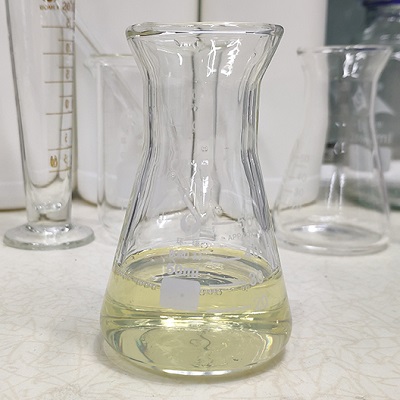- 1,1-diiodomethane
-

- $0.00 / 25KG
-
2025-03-21
- CAS:
- Min. Order: 1KG
- Purity: 99%
- Supply Ability: 50000KG/month
- Diiodomethane
-

- $49.60 / 1KG
-
2024-10-11
- CAS:75-11-6
- Min. Order: 1KG
- Purity: 99%
- Supply Ability: 5000kg
- Diiodomethane
-

- $15.00 / 1KG
-
2021-07-13
- CAS:75-11-6
- Min. Order: 1KG
- Purity: 99%+ HPLC
- Supply Ability: Monthly supply of 1 ton
|
| | Diiodomethane Basic information |
| Product Name: | Diiodomethane | | Synonyms: | Diiodomethane (stabilized with Copper chip);Diiodomethane, 99+%, stabilized;Diiodomethane, stabilized;Diiodomethane, 99%, stab. with copper;Diiodmethane;Diiodomethane ,98%;DiiodoMethane, stabilized, 99+% 100GR;DiiodoMethane, stabilized, 99+% 500GR | | CAS: | 75-11-6 | | MF: | CH2I2 | | MW: | 267.84 | | EINECS: | 200-841-5 | | Product Categories: | Organics;Pharmaceutical Intermediates | | Mol File: | 75-11-6.mol |  |
| | Diiodomethane Chemical Properties |
| Melting point | 6 °C | | Boiling point | 67-69 °C11 mm Hg(lit.) | | density | 3.325 g/mL at 25 °C(lit.) | | vapor density | 9.25 (vs air) | | refractive index | 1.737 | | Fp | 181°C | | storage temp. | Store below +30°C. | | solubility | 0.8g/l | | form | Liquid | | Specific Gravity | 3.325 | | color | deep yellow | | Water Solubility | 14 g/L (20 ºC) | | Sensitive | Light Sensitive | | Merck | 14,6066 | | BRN | 1696892 | | Dielectric constant | 5.3(-4℃) | | Stability: | Stable. Incompatible with strong oxidizing agents, strong bases. Reacts violently with alkali metal salts. May discolour on exposure to light. | | Surface tension | 50.8mN/m at 20°C | | CAS DataBase Reference | 75-11-6(CAS DataBase Reference) | | NIST Chemistry Reference | Methane, diiodo-(75-11-6) | | EPA Substance Registry System | Methylene iodide (75-11-6) |
| Hazard Codes | Xi,Xn | | Risk Statements | 36/37/38-22-20/21/22 | | Safety Statements | 26-37/39-36/37/39 | | RIDADR | 2810 | | WGK Germany | 3 | | RTECS | PA8575000 | | F | 8 | | TSCA | Yes | | HazardClass | 6.1 | | PackingGroup | III | | HS Code | 29033080 | | Toxicity | LD50 orally in Rabbit: 76 mg/kg |
| | Diiodomethane Usage And Synthesis |
| Description | Diiodomethane (CH2I2) is an iodine containing organic compound. Its decomposition in acetonitrile initiated by 310nm light has been investigated. Femtosecond pump-probe spectroscopic and ab initio molecular dynamics simulations studies of the photodecomposition of CH2I2 suggest the formation of the isomer of diiodomethane (CH2I-I) as hot photoproduct. In the atmosphere, it undergoes photolysis in the presence of ozone to afford iodine oxide (IO) which results in the formation of aerosols. Its vacuum ultraviolet (VUV) photoabsorption spectrum has been reported.

Diiodomethane has been used as a probe liquid for evaluation of the polar and dispersive components of the surface energy of the catecholamine coated fiber surfaces. It may be used for the preparation of cyclopropyl ketones, esters and amides.
Diiodomethane may be used as a probe solvent in contact angle measurement to analyze the hydrophilicity of polymer surfaces.
https://www.sigmaaldrich.com/catalog/product/sial/158429 | | Chemical Properties | Diiodomethane is a light yellow or gold liquid with chloroform-like odour. It has a relative density of 3.325 at 20°C and can be mixed with benzene to produce liquids with different densities. These mixtures are used in the determination of the refractive indices of minerals and for the separation of minerals according to density. | | Uses | Diiodomethane is used to determine the density of minerals and other solid samples due to its high density. It is used as an optical contact liquid to determine the refractive index of certain gemstones. In simmons-smith reaction, it acts as a reagent to generate methylene (carbine) free radical. It reacts with olefins to prepare cyclopropanes with high stereo specificity. | | Application | Diiodomethane is used as the dispersive (non-polar) liquid while de-ionized water and glycerol as polar liquids. It is also used in separating mixtures of minerals. In determining the specific gravity of minerals and other substances. In the manufacture of x-ray contrast media. | | General Description | Diiodomethane (CH2I2) is an iodine containing organic compound. Its decomposition in acetonitrile initiated by 310nm light has been investigated. Femtosecond pump-probe spectroscopic and ab initio molecular dynamics simulations studies of the photodecomposition of CH2I2 suggest the formation of the isomer of diiodomethane (CH2I-I) as hot photoproduct. In the atmosphere, it undergoes photolysis in the presence of ozone to afford iodine oxide (IO) which results in the formation of aerosols. Its vacuum ultraviolet (VUV) photoabsorption spectrum has been reported. | | Hazard | May be irritating and narcotic.
Diiodomethane has the advantages of high opacity,ease of penetration,and ease of removal because it evaporates fairly quickly.However,it can cause skin burns. | | Synthesis | Diiodomethane can be prepared from the widely available solvent dichloromethane by the action of sodium iodide in acetone in the Finkelstein reaction:
CH2Cl2 + 2 NaI → CH2I2 + 2 NaCl.
It can also be prepared by reducing iodoform with elemental phosphorus or sodium arsenite:
CHI3 + Na3AsO3 + NaOH → CH2I2 + NaI + Na3AsO.
Diiodomethane is prepared by reacting iodoform with sodium acetate in ethanol. | | Purification Methods | Fractionally distil it under reduced pressure, then fractionally crystallise it by partial freezing, and stabilize it with silver wool if necessary. It has also been purified by drying over CaCl2 and fractionally distilling from Cu powder. Store it in the dark. [Beilstein 1 IV 97.] |
| | Diiodomethane Preparation Products And Raw materials |
|